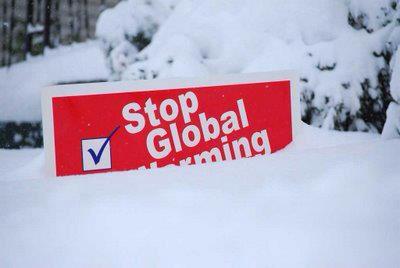Researchers with Israel’s Weizmann Institute have found that man-made aerosol emissions have had a net cooling effect on the planet since the Industrial Revolution.
The idea is that few clouds may have populated the skies before the Industrial Revolution, but the increased aerosol emissions from man-made industrial sources may have actually increased cloud cover on the planet and caused a cooling effect.
“A transition from pristine to slightly polluted atmosphere yields estimated negative forcing of ~15 watts per square meter (cooling),” write scientists with the Weizmann Institute, “suggesting that a substantial part of this anthropogenic forcing over the oceans occurred at the beginning of the industrial era, when the marine atmosphere experienced such transformation.”
The study came to the conclusion that aerosols were cooling the planet based on observations of the Southern Hemisphere’s Horse Latitudes, which is a region of the ocean with little and is less likely to see aerosols carried there from the continents.
E&E News reported the researchers “used data from four different satellites to observe the clouds, the aerosol content, temperature, meteorology and rainfall over 92 days in the winter of 2007.” As the aerosol levels in the clouds increased naturally, the more overcast the region became, and the more it cooled.
The authors also found that “there was no point of saturation beyond which aerosols stopped affecting the clouds. As the cloud cover doubled, they reflected more incoming solar rays back to space. Thus, the clouds had a cooling effect,” reports E&E News.
The authors of the study, however, have warned that their findings are preliminary but based on widely accepted theories about cloud cover and climate. Aerosols, natural or man-made, are key to creating cloud cover, without them there would be no clouds.
Natural aerosols are created, for example, when the sun’s rays hit the ocean and cause water to evaporate. Water vapor clings to aerosol particles floating in the atmosphere and eventually forms a water and dust seed that becomes a cloud.
“Ultimately, it [aerosols] affects the amount of clouds that are out there, and also the properties of the clouds — the area, for example, they cover over the globe. And all that affects the radiation that can actually hit the [Earth’s] surface,” Andreas Muhlbauer, a research scientist at the Joint Institute for the Study of the Atmosphere and Ocean at the University of Washington, told E&E News — he was not involved in the study.
This study could also have a major impact on global temperature predictions made by climate scientists. The United Nations Intergovernmental Panel on Climate Change says that global temperatures could rise between 1.5 degrees Celsius and 4.5 degrees Celsius by the end of this century.
But fully adding the effects of cloud cover into their climate models could force scientists to reconsider temperature impacts from greenhouse gas emissions.
“The more carbon dioxide and other greenhouse gases in the atmosphere, the stronger the climate warming that results. Likewise, the more aerosol particles suspended in the atmosphere, the greater the ability of these particles either to scatter sunlight back to space and cool the planet or to absorb sunlight in the atmosphere, thereby warming the atmosphere while cooling Earth’s surface,” wrote Lorraine Rerner with the Joint Center for Earth Systems Technology at the University of Maryland Baltimore County in response to the Weizmann Institute study.
“However, not all such climate forcing processes depend linearly on the concentrations of their forcing agent. The climatic effects of aerosols are complicated by their interactions with clouds,” Rerner wrote, adding that the Weizmann study showed “that even small additions of aerosol particles to clouds in the cleanest regions of Earth’s atmosphere will have a large effect on those clouds and their contribution to climate forcing.”
Follow Michael on Twitter and Facebook




